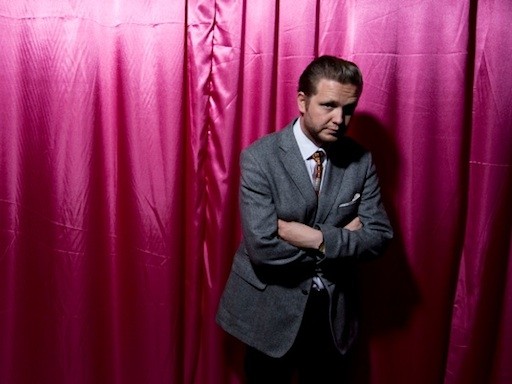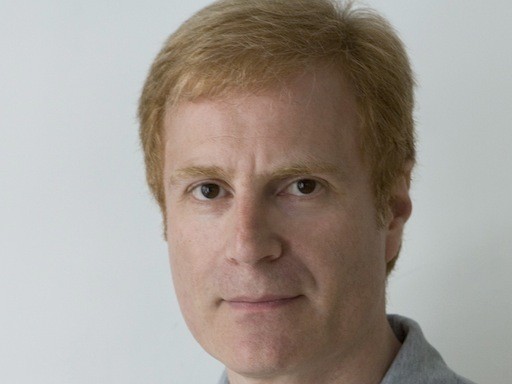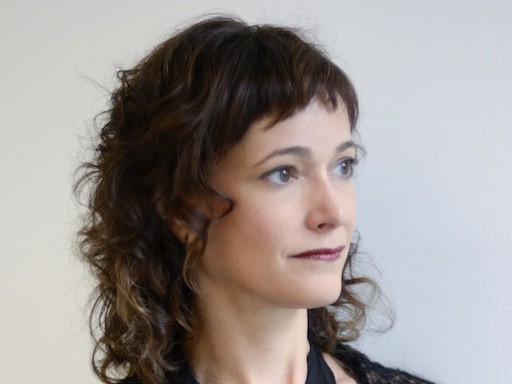For nearly a decade, the Russian collector, curator, and art patron Maria Baibakova has been a critical driver in both building the infrastructure for a vibrant and sustainable contemporary art scene in her country and opening up the lines of artistic exchange between Russia and the wider world. Her Moscow-based non-profit Baibakov Art Projects has been a powerful fulcrum for these efforts, allowing her to stage museum-quality exhibitions that draw international attention—leading the New Yorker to declare that "if anyone is to become Russia's Peggy Guggenheim, it is Baibakova." Now, joining Artspace as strategic director in charge of expanding the site's presence in the global marketplace, Baibakova has a new avenue for bringing about her cultural vision.
To discuss that cultural vision, and to learn about her deep experience—both academic and market-driven—in the art world, Artspace editor-in-chief Andrew M. Goldstein spoke to Baibakova about her plans, her collecting, and the ideas behind her engagement with contemporary art.
How did you first come to be interested in art?
When I was growing up my parents were very young—they are only 18 years older than me—and I remember them taking me to shows at the Central House of Artists, one of our only contemporary art museums in Moscow. There was no real contemporary art scene in Russia at the time—there were no institutions dedicated to contemporary art, and there was no framework for the art market or any other supporting activities. Then, when I was in high school, I took an art history class with a professor who opened up my eyes to the fact that art is not merely decorative, but is deeply rich in meaning. What I found most interesting was the intellectual challenge of unpacking an artwork from the perspective of the socioeconomic and political context in which it was made and the individual psychology of the artist. For me, the artworks themselves became a gateway to a much broader realm that I could explore. I decided to continue studying art history, but I didn't yet have a sense that I wanted go into contemporary art specifically—I was actually drawn to older periods of art.
When did you become drawn to more recent art?
When I was studying at Barnard, I started to delve deeply into different geographies and eras to see what I was most drawn to. I worked in the Indian and Southeast Asian art department at Sotheby's at one point because I was very interested in art from that region. But I also worked in early 20th-century Modern and European art at a gallery in London, and then I ended up working at a contemporary art gallery in New York, the Mike Weiss Gallery. I began there in January 2004, right after it opened, and it was the first time that I was exposed to living artists, as opposed to viewing art through a historical lens and having to speculate about how the artist's context and character informed the work. Suddenly, instead of playing the guessing game, I was able to interact directly with artists and also understand their context much better. I thought that was extremely gratifying and enriching.
Was it there that you decided to devote yourself to contemporary art, and working with contemporary artists?
I'm not sure that I ever consciously made that decision—I just never stopped, one thing led to another, and opportunities presented themselves. I was very lucky in that I was in the right place at the right time, because as I was growing up in New York and going to school, the Western world really started to pay attention to Russia. And as Russia became more prosperous, a lot more people in my country became interested in art. But at the same time, all these Russian institutions, both for-profit and non-profit, didn't have people who could help interface with Western clients or institutions that wanted to send shows to Russia. I was very interested in facilitating negotiations between Russian and Western parties, and structuring different initiatives that were art-related.
How did you come to found Baibakov Art Projects?
When I moved to London to get my master's degree in art history at the Courtauld Institute, I was already spending half of my time in Moscow working on projects in parallel to studying. It became overwhelmingly clear to me that, because of the demand from the West to showcase work in Russia and the lack of infrastructure and institutions in Moscow and St. Petersburg, it was a necessity for someone to come in and start building the basic foundation for contemporary art to exist and prosper. Luckily, a lot of players came on at the same time. The Winzavod Center for Contemporary Art opened in Moscow in spring of 2007, which was when I graduated college, and then in 2008 the Garage opened and I founded Baibakov Art Projects. So a critical mass of activity emerged.
At Baibakov Art Projects you have worked with cultural partners like 032c and cutting-edge artists like Walead Beshty and Luc Tuymans. What is the philosophy behind your organization?
Initially the idea for Baibakov Art Projects was to activate an important architectural site in Moscow, the historic Red October Chocolate Factory, through contemporary art and to frame a new dialogue by bringing international contemporary art to Russia and putting Russian contemporary art on an international platform. Russian artists at the time felt alienated from the global art world, so to compensate for that the first thing I did was to issue an open call for proposals for site-specific commissions by artists. We said, "Send whatever is in your wildest dreams, your most ambitious ideas," and because we're not a commercial platform they didn't have to be commercial in any way. We got around 125 proposals and selected 22, and we called the show "Invasion: Evasion." On the one hand it was about invading the metaphorical space of global contemporary art that was so impermeable to these artists from Russia, and at the same time "evasion" signified a desire by Russian artists to avoid categorization, to no longer be bastardized for being Russian—to be considered on merit alone. The other thing that was interesting to me about this experiment, and very rewarding, was that we actually invited the artists to live and work at the factory while they were producing their installations
Why was that important to the exhibition concept?
We really wanted to knock down the walls between the Russian-style institutions and artists. You have to think about Communism—everything was so hierarchical, you had to whisper in the Hermitage lest your presence in that room somehow disturb the temperature necessary for the masterpieces. There was so much alienation between the institutions and the people coming out of the Soviet Union that we really wanted to break through. It was great to work alongside those artists, and it was a flat organization in the sense that we had a big office inside the exhibition space filled with Ikea furniture and everyone sat in the same room. The artists were working on their projects right next to us and could come over and ask any question they wanted, so there was a lot of dialogue and that was really rewarding. That's what really motivated me, working with living, breathing artists, seeing their processes, and facilitating them as best I can.
From the Western perspective, the Russian art scene gone through two phases in contemporary times. First there was Bulatov, Kabakov, and the Moscow Conceptualists, who made romantic, introspective art under the Soviet Union, and then in more recent times the spotlight has gone to fiercely political work by artists from Oleg Kulik and the Blue Noses to Voina and Pussy Riot. Do you feel that these artists represent the Russian contemporary art scene in its true form on the international art stage?
It's very interesting to consider in general what kind of art makes it to the international press, because of course the press is in the business of selling headlines, and the headlines that sell are about political work or artists that are disadvantaged because of censorship or adverse political climate. Any suppression of self-expression is something that is obviously going to be at the forefront of the discussion globally, as opposed to just aesthetic innovation. I think that Pussy Riot is extremely important and I definitely stand behind the girls—you can see from my blog that we're extremely supportive of them. But in addition to the politically activist works that are being made in Russia, there is also of course a rich art scene that has emerged involving artists who I think speak to a truly international visual experience. These artists are not necessarily rooted in a politically active approach per se but are more interested in exploring the various media that they work in. That's generally the case in Western art today, where there are many artists whose work is about art itself, about process. Like Wade Guyton—you can't really call Wade Guyton's work political. Then there are artists who are actively engaged with their context and engaged in social commentary, like Ai Weiwei. I don't think it's fair to say that one is better than the other. I think they both can exist.
But, as you said, one approach certainly achieves more visibility that the other.
In Russia today I think there is very rich material to be found in the art about the process of art itself. I also think that Russian photography is extremely strong. I'm not talking about documentary photography, but I'm talking about artists working in the medium of photography like Sergey Bratkov or Boris Mikhailov. These artists employ an international language that speaks to the human condition at large—it's not just about being Russian or being Eastern European or narrating about a very specific people. I think that although these artists are making it, being shown in biennials, many others are falling through the cracks because there aren't enough strong institutions, whether in Russia or the West, to support them in an organized, structured way. In that sense I think the Middle East is doing a much better job in raising artists.
In addition to helping provide exposure for artists through your institution, another way that you support the art community is through your collecting. How did you began collecting art, and what frames your approach as a collector?
I think that collecting is a very personal experience, and that true collectors who have the collecting bug can't tell you when they started because they probably started as soon as they were born, collecting objects they could organize and hoard. What is collecting really? It's an externalized process of narrating your internal state. Through my selections—the very act of choosing an object—I am suggesting that it represents a part of me, and that's very interesting. That narration could be a gratifying experience in collecting various things but for me art is the most rewarding vehicle, and because I collect contemporary art my acquisitions are a result of a deep engagement with the artist or his or her intellectual practice. It's a continuous practice. I now have a few years of experience with collecting. I guess I started collecting seriously in college.
As a patron, collector, and curator—and also as a businesswoman, since you're about to earn you MBA at Harvard Business School—what is the role you hope to play in the art world over time?
With regards to Russia, I feel it is very important to me that I continue investing in and being a part of institutions that will support the development of contemporary art over the long term. I think we have a very long way to go, and I think that the institution-building side of things can be enabled by all the aspects that you mentioned. I want to inspire people as a patron and lead by example. I want to support artists and their missions by helping them realize their dreams, whether it be a difficult commission or a catalogue that needs to be published on a small level or whether it be on a larger level of being a spokesperson for Russian art in the world. From a business perspective, I would love to help develop the market for Russian contemporary art.
Why is it important to develop that market?
Because the market is extremely important for art to become an industry. A lot of people talk about the industrialization of the art world as negative, particularly in the West. That's sort of the stodgily academic framework: "Oh, let's talk about how the art market has destroyed authenticity in art." But I think that's just silly. You mentioned Kabakov and Bulatov, but I think it's very sad that in Russia they had to have day jobs in order to feed their families. They had to produce art at night, in their free time, on the side, and I think that's a very sad waste of talent. I think we as collectors and art patrons have a responsibility to make sure that the market for contemporary Russian art exists in order to enable our artists to be artists full-time, to be able to devote all their energy to creative and intellectual endeavors instead of having to get by.
That's a good segue into talking about your plans at Artspace, since we have created a platform devoted to funneling the proceeds of sales back to artists and institutions. What is it that drew you to Artspace?
Artspace is a very innovative platform. What I like about it most is that, in my opinion, it's completely win-win and acts as a great complement to the art world at large. It plays the role of a missing link, an enabler, for the different interests of various stakeholders like museums, galleries, and artists, and it also provides a service to collectors and would-be collectors through educational content, which is extremely valuable. I am particularly impressed by the value that Artspace creates for non-profit institutions. As an art patron, I sit on many committees of different kinds that have to do with fundraising. So, for example, when a museum is trying to fundraise towards their operating budget or an exhibition that's coming up, it's a huge challenge for museum professionals or curators to put on the commercial hat and identify the sources of revenue available besides asking patrons for money—and that's just not a sustainable source of revenue. It's an important source of revenue, of course, but we all understand now that art patronage needs to evolve, and that the revenue streams for any given institution need to be diversified. One way institutions do this is by asking the artists they work with to create editions that can be sold to benefit the museum, but then the museum doesn't have the infrastructure to sell them effectively—or even has a conflict of interest in trying to become a commercial platform to push what has now become inventory out into the general public. Artspace helps museums by offering their works for sale online, matching this precious supply with a global collecting demand beyond the museum's reach. In this sense, I think Artspace plays a crucial enabling role that is an important value-add for these institutions.
What about the galleries and the collectors? How do you see Artspace benefiting them?
For artists, additional presence on the Web is extremely important because it creates a much wider exposure to a greater number of art appreciators and collectors. The gallery system is still very much a brick-and-mortar business and it's also a very opaque business, so there's a barrier to entry for new collectors to come in and start collecting or engaging with the gallery. Moreover, the gallery sales people are less inclined to cultivate a relationship with a new collector on a modest budget than they are to continue building a relationship with a collector who has a very robust budget. I think Artspace fills that void as well, and in many ways breaks down the walls between the galleries and the collectors and allows for a back-and-forth, risk-free self-educational process to exist. I think that it's great that there is an equalized playing field in the sense that you can make a direct purchase—you don't need to be interviewed about how you're going to live with the work or what you're going to do, et cetera, like you would in a gallery; you can just be very honest with yourself and say, "I really like this." It's your business how you're going to live with the work and you can go ahead and make the purchase now. I see Artspace as being very innovative in that regard.
Could you talk about your vision in terms of growing the site's international presence?
I'm very interested in making Artspace more global in the sense of being more globally present—representing artists from more locations around the world. I'm interested in expanding the institutional partnerships to include a variety of international non-profits and galleries. I think there is a lot of room for growth—there are many underserved markets and countries where Artspace could create a lot of value for the various stakeholders in the art world.
Now that you are about to graduate in a few months from Harvard, what are you immediate plans?
I see myself as a cultural entrepreneur, and as strategic director at Artspace I'm going to spend a significant part of my time working on the site. I'm also continuing my commitment to Baibakov Art Projects and to Moscow, and to building out my organization and following its mission and charter. I will continue collecting and maintaining my various other non-profit engagements, whether it be the Russian/Eastern European committee at the Tate or the advisory board at Art Dubai or the Lincoln Center Art Committee. I have a wide array of commitments, and fulfilling those commitments is my plan.



























